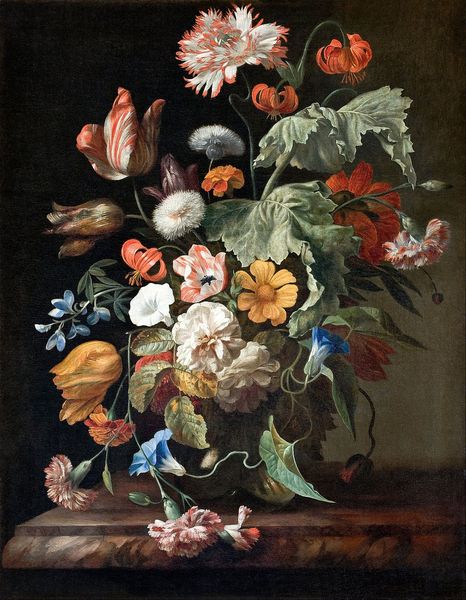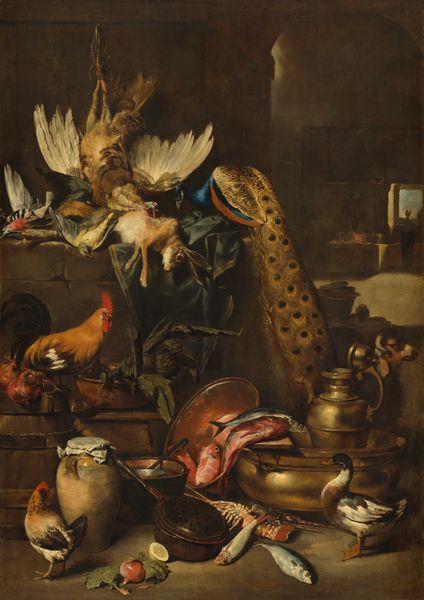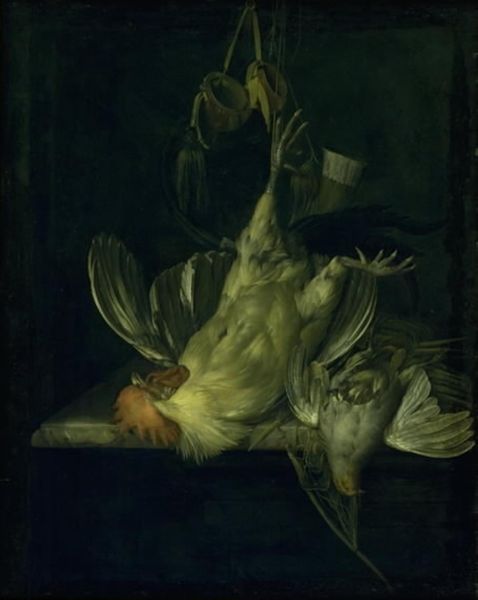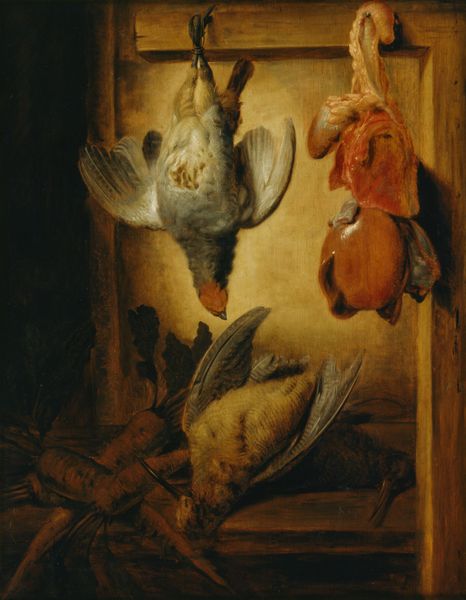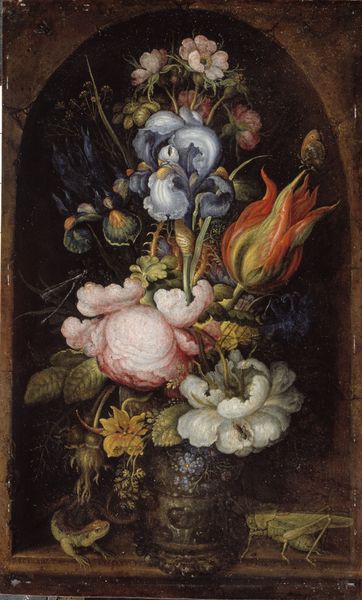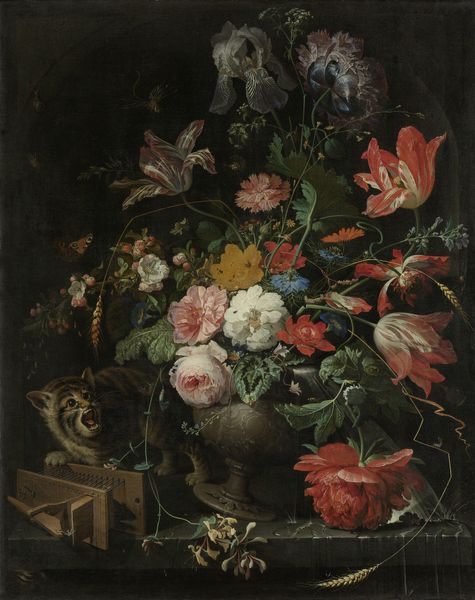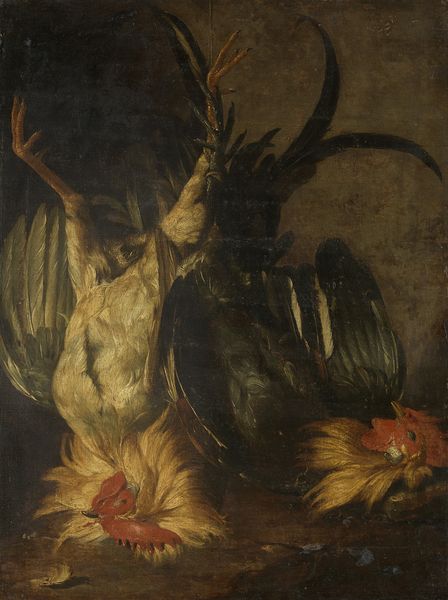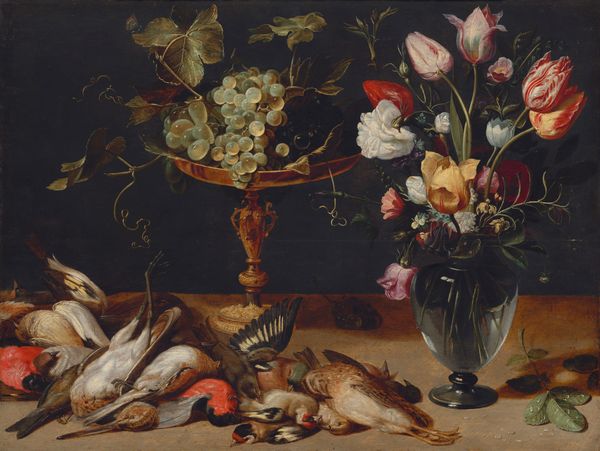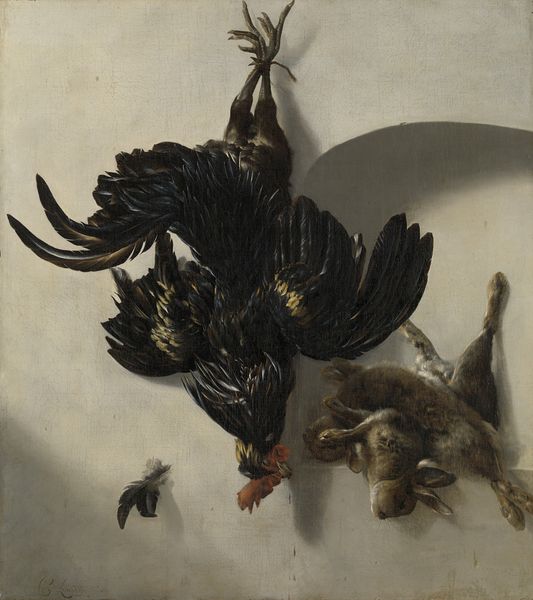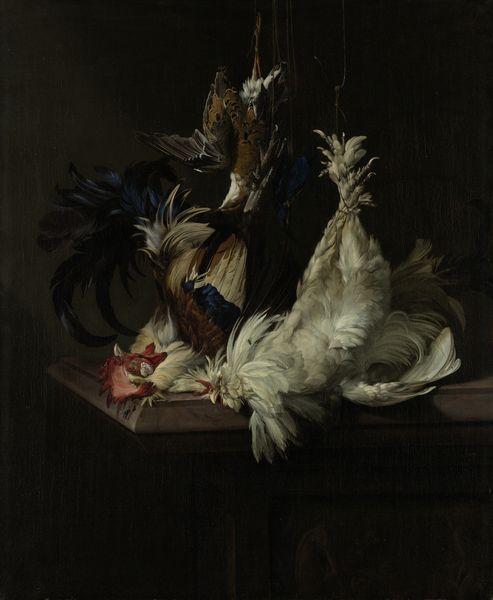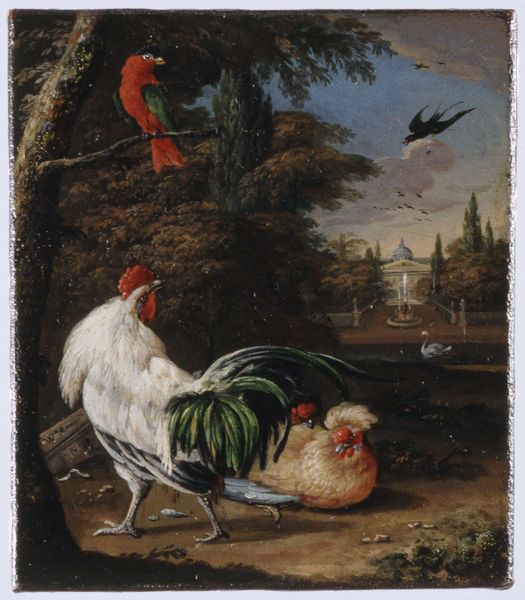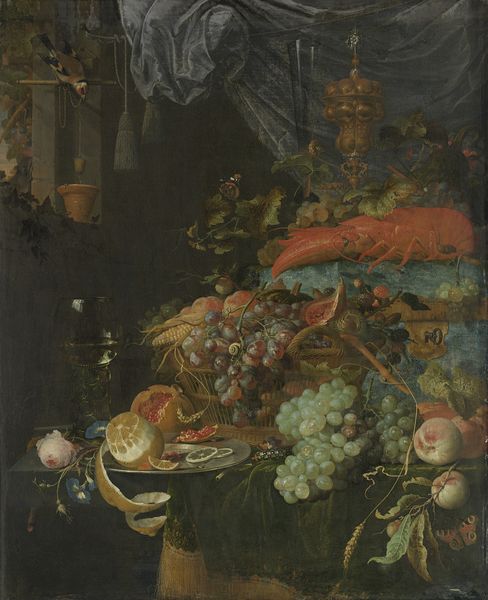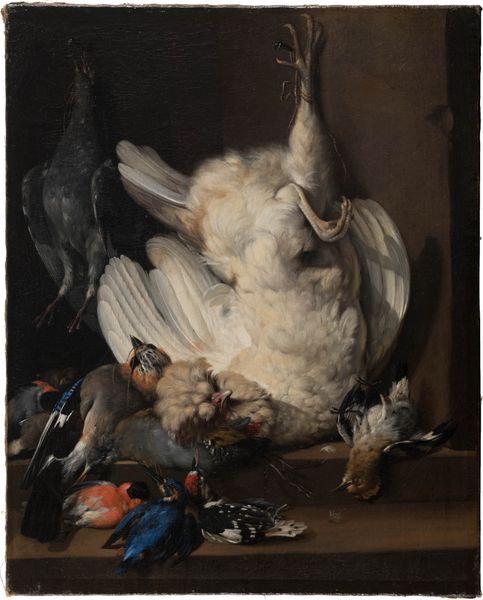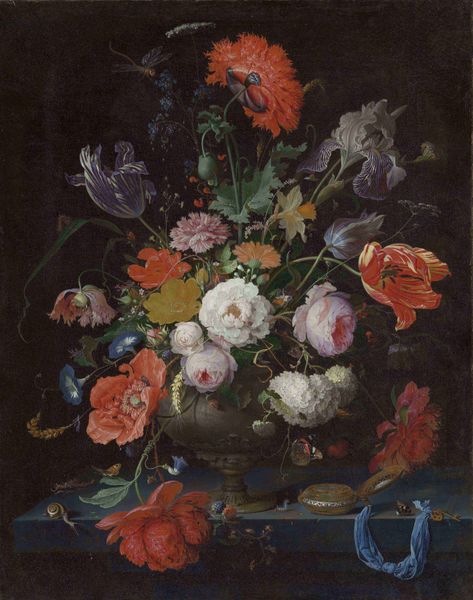
painting, oil-paint, oil
#
baroque
#
painting
#
oil-paint
#
oil
#
bird
#
oil painting
Dimensions: 58.7 x 49.3 cm
Copyright: Public Domain
Curator: Abraham Mignon’s *Still Life with Dead Poultry,* created around 1663-1664, presents quite the assortment of…well, dead birds. It’s oil on canvas, currently residing at the Städel Museum. Editor: Yikes, my first impression? A bit macabre, isn’t it? But also… exquisitely rendered. Look at the light catching those feathers! There’s a weird kind of beauty in the arrangement, almost baroque in its excess. Curator: Indeed. Let's consider the materiality: oil paint allowed Mignon to achieve incredible detail. The textures, from the soft plumage to the sheen on the table… these denote considerable artistic labor. Editor: And there’s a strange drama happening. The composition is… crammed, overloaded, even? But there’s life in it, paradoxically. A butterfly, some insects – almost like nature reclaiming the scene. Ironic, don't you think? Curator: Mignon operated within very specific socio-economic structures, fulfilling commissions that reflect consumption and wealth. These paintings were commodities, and also represent societal attitudes towards food, hunting, and nature itself. Editor: Okay, Professor Materialist! But beyond the class dynamics, it’s just fascinating to see death so…stylized. The almost theatrical lighting, those drooping heads. It's as though they are players on a stage after a final curtain call. Bit bleak but what can I say? I am in love! Curator: And don't forget, oil painting's materiality—pigments sourced globally, labor of grinding and mixing. Also this wasn't necessarily art, in a contemporary sense: it might be regarded as luxurious interior decoration. Editor: Point taken. Seeing it from that production and societal point of view casts a different light… albeit still pretty gloomy, considering what’s displayed. Ultimately, this Baroque extravagance reveals deeper layers: death, societal expectations and, of course, artistic skill. It is, to put it plainly, amazing. Curator: Indeed, by observing this work’s raw materials and considering how its making was shaped by society, we can now leave it behind, and move onto more!
Comments
No comments
Be the first to comment and join the conversation on the ultimate creative platform.
